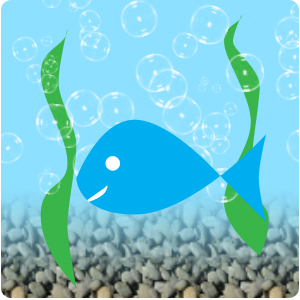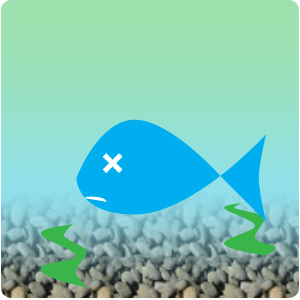
- The TRUTH About America's Water
- Water Pollutants that Cause Illness
- Are Minerals in Water Important for Health?
- Top 5 Drinking Water Contaminants
- Do I Need a Whole House Water Filter?
Biochemical Oxygen Demand and Water Quality Page 2
One of the most important nutrients affecting Biochemical oxygen demand (BOD) in aquatic systems in the recent past is the phosphate pollution from American households. It was discovered decades ago that the addition of phosphorous to soaps and detergents made them clean better. By the 1960s, millions of households and businesses were dumping tons and tons of phosphate down the drain. Eventually, much of this important nutrient made its way to the watercourses of America. Because phosphorous is one of the most important limiting factors (necessary nutrients) in aquatic systems, there began numerous and widespread algal blooms. Algal blooms are dramatic population outbursts of growth in which often one or two species of algae suddenly find the conditions right for rapid growth. Then these algae create imbalances in ecosystems, destroy other life forms and produce harmful toxins.During the 1960s and the 1970s, this phenomenon was widespread with dramatic fish kills and large segments of slow-moving rivers and lakes becoming almost abiotic (lifeless) because of high BOD caused by pollution. Because most unicellular algae reproduce asexually by rapid cell division, it doesn't take long for a species of algae to suddenly and literally turn the water green with billions and billions of new cells. Because the conditions necessary to these algal blooms are sometimes temporary or because the algae exceed the threshold level of some other limiting factor, the blooms are only temporary. They often last only a few days. What happens when the bloom is over? The algal cells don't have enough nutrients and most of them die. At this point, the aerobic bacteria become important and start to decompose the algae. Because there is so much food for them, they also experience a sort of bloom, and they literally suck the oxygen out of the water. When the oxygen is gone, the bacteria and most other aerobic creatures in the aquatic system start to die.
 |  |
| Healthy Water | Unhealthy Water |
The procedures followed in this exercise involve the collection of water and the measurement of dissolved oxygen and pH at the time of the collection. The samples are placed in bottles full to the brim and sealed off by a lid. The sample bottles are covered completely with aluminum foil and placed in a dark place. This limits the photosynthesis, which could happen with captured algae. After five days, the bottles are uncorked and the dissolved oxygen is probed. The difference between the first and the last of the samples is called the BOD. A low number generally means little pollution and/or little aerobic activity. A high BOD means the opposite.
Read Next: Oxygen in Your Drinking Water Supply

